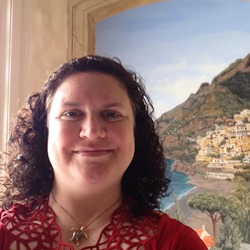Вы здесь
The use of umbilical cord blood cells to treat neurodegenerative diseases offers hope for patients

A newly patented procedure paves the way
Millions of people worldwide suffer from neurological diseases of the brain and spinal cord, such as Alzheimer's disease, stroke, Lou Gehrig's disease (ALS), traumatic brain injury, and spinal cord injury; all devastating and deadly diseases that lack adequate treatment options.
For patients suffering from these diseases and conditions, there is hope on the horizon, however. That hope comes from blood collected from the umbilical cord of newly-born infants. In the past, umbilical cord blood was disposed of as medical waste. But now, we know that umbilical cord blood cells can possibly be used for the treatment of neurological conditions for which there are few therapeutic alternatives.
Human umbilical cord blood provides a rich source of multipotent stem cells that have the ability to become different types of cells, including neural cells. Currently, we are developing therapies for many different diseases, including those mentioned above, from cord blood-derived neural cells. In addition, cells obtained from umbilical cord blood could also potentially help repair damage from heart attacks and treat other cardiovascular diseases.
Finding ways to obtain and use umbilical cord blood cells to develop cell transplantation therapies for neurological disorders and diseases is a high priority here at Saneron.
Saneron is a biotechnology research and development company spun out from the University of South Florida (USF) and affiliated with Cryo-Cell International since 2001. In collaboration with USF researchers, we have recently received a patent for a new method of isolating stem cells from donated umbilical cord blood and preparing them for therapeutic transplantation.
These steps include: retrieving cord blood cells, separating the different types of cells by using a magnetic separator, and then "expanding" the cells, or incubating them in a "growth factor". Then, we use a "differentiation agent" to help the cells change into neural cells suitable for transplantation.
The umbilical cord blood cells can be provided by self-donors (autologous) or other-donors (allogeneic). Also, the umbilical cord blood sample may be fresh or frozen (cryopreserved). The cord blood produces a sufficient amount of stem cells so that a single sample can provide enough stem cells to treat a patient.
Saneron's umbilical cord blood research initially started with developing therapies for stroke, before expanding to Alzheimer's disease, Lou Gehrig's disease (ALS), spinal cord injury, traumatic brain injury, Sanfillipo syndrome, and myocardial infarction.
We have high hopes for our newly patented techniques for using umbilical cord blood cells therapeutically. These cells are great candidates for restorative stroke therapy because they are less mature than bone marrow cells. Their immaturity allows them to differentiate more readily into different kinds of cells. They are also easier to isolate and obtain than many other kinds of cells.
Our latest focus is partnering with USF's Center of Excellence for Aging and Brain Repair, to investigate the use of umbilical cord blood cells in treating patients with diabetes who have suffered strokes.


